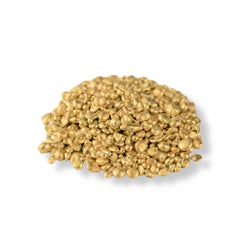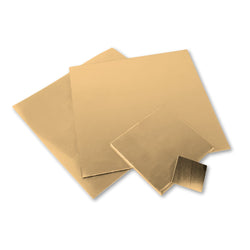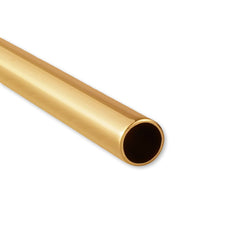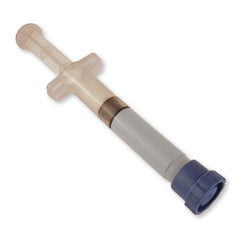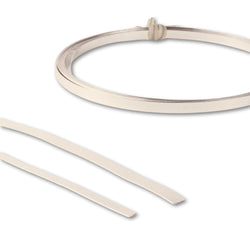Hergestellte Metalle
Australischer Schmuckbedarf
Unsere Sammlung geht über die reine Lieferung von Metallen hinaus. Es geht darum, eine Grundlage für Kreativität und handwerkliche Exzellenz zu schaffen. Mit unserem Premium-Sortiment decken wir alle Facetten Ihres Schmuckherstellungsprozesses ab:
- Gusskorn: Unser Gusskorn wurde mit Blick auf professionelle Handwerkskunst entwickelt und deckt ein Spektrum an Edelmetallen ab, darunter 9 Karat, 14 Karat und 18 Karat Gelb-, Weiß- und Roségold sowie Feinsilber, Sterlingsilber und exotischere Edelmetalle wie Platin und Palladium. Jede Charge wird sorgfältig auf Reinheit geprüft, um sicherzustellen, dass Ihre Gussstücke sowohl Haltbarkeit als auch Glanz aufweisen.
- Blech: Entdecken Sie unsere Premium-Blechauswahl, die sich perfekt für die Fertigung, Formung, Gravur, Stanzung und Veredelung eignet. Von der formbaren Schönheit von massivem Gold bis zum Glanz von Sterlingsilber erfüllen unsere Platten Ihre vielfältigen handwerklichen Anforderungen in unvergleichlicher Qualität.
- Schmuckdraht: Biegen, wickeln, drehen und formen Sie nach Herzenslust mit unserem widerstandsfähigen Schmuckdraht. Unsere Drähte sind in einer Vielzahl von Formen wie quadratisch, halbrund, rechteckig, verdrillt und mehr erhältlich und in verschiedenen Stärken erhältlich, um komplizierte Designs und strukturelle Integrität zu unterstützen.
- Rohr: Unsere Rohre eignen sich ideal für die Herstellung dimensionaler Elemente und sind in Legierungen wie Gelb- und Weißgold, Silber und unedlen Metallen wie Messing und Kupfer erhältlich. Sie bieten eine vielseitige Basis für Fassungen, Rahmen oder einzigartige geometrische Akzente bei Ihrer Schmuckherstellung.
- Lot: Unser Lotsortiment liefert zuverlässige Verbindungen mit einer Reihe von Fließtemperaturen und Zusammensetzungen, passend zu den Metallen in Ihrem Projekt. Wählen Sie zwischen leichtem und hartem Lot, um dauerhafte Verbindungen in Ihren Teilen mit minimalen Farbunterschieden herzustellen.
- Streifen: Lassen Sie Ihrer Kreativität freien Lauf mit unserer Auswahl an Streifen, einschließlich Rahmen-, Galerie- und Dekorationsoptionen. Sie sind in verschiedenen Metallen und Mustern erhältlich und eignen sich ideal zum Hinzufügen kunstvoller Kanten, Rahmen oder strukturierter Verzierungen zu Ihren Schmuckstücken.
- Kette: Von klassischen Ankerketten bis hin zu aufwändigen Figaro- und Panzerketten-Designs umfasst unser Sortiment fertig konfektionierte Halsketten und Armbänder sowie Kettenrollen für individuelle Längen. Diese aus massivem Sterlingsilber und 9-karätigem Gold gefertigten Ketten bieten eine stabile und stilvolle Grundlage für Anhänger und Charms oder können einzeln als Statement-Stück verwendet werden.
Als Juwelier wissen Sie, wie wichtig es ist, mit den Besten zu beginnen. Unsere handgefertigten Metalle sind die Bausteine, die von den renommiertesten Juwelieren weltweit verwendet werden, und garantieren Ihnen den höchsten Standard. Mit unseren Materialien sind Ihrem Handwerk keine Grenzen gesetzt – lassen Sie Ihrer Fantasie freien Lauf und lassen Sie die edelsten Metalle die Zukunft Ihrer Designs gestalten.
Häufig gestellte Fragen
Eine „Legierung“ ist eine Kombination aus zusammengeschmolzenen Metallen, um ihre Eigenschaften für bestimmte Verwendungszwecke zu verbessern oder zu verändern.
Bei der Schmuckherstellung werden Legierungen hergestellt, um die Festigkeit, Haltbarkeit und Farbe von Edelmetallen zu erhöhen.
Beispielsweise ist reines Gold (24 Karat) zu weich für den täglichen Gebrauch, daher wird es mit Metallen wie Kupfer und Silber legiert, um 18 Karat Gold herzustellen, das stärker ist und sich für edlen Schmuck eignet.
Legierungen können auch den Schmelzpunkt, die Formbarkeit und das Aussehen von Metall beeinflussen und bieten Juwelieren eine Vielzahl von Materialien für unterschiedliche Designanforderungen.
Edler Schmuck wird typischerweise aus hochwertigen Edelmetallen gefertigt, die sowohl Schönheit als auch Widerstandsfähigkeit bieten.
Besonders hervorzuheben sind 18-karätiges Gelbgold und 18-karätiges Weißgold, die beide reines Gold mit anderen Metallen kombinieren, um ihre unverwechselbare Farbe und Stärke zu erzielen.
Platin ist aufgrund seiner Reinheit, Dichte und des hellen, weißen Glanzes, der nicht verblasst oder anläuft, ein weiterer Grundbestandteil edlen Schmucks.
Diese Metalle werden wegen ihrer Langlebigkeit, hypoallergenen Eigenschaften und der Art und Weise, wie sie den Glanz von Edelsteinen verstärken, geschätzt.
Bei der Herstellung von Schmuck ist es ratsam, Metalle zu vermeiden, die korrosionsanfällig sind, leicht anlaufen oder allergische Reaktionen hervorrufen können.
Metalle wie Nickel und Blei werden aufgrund ihres Potenzials für allergische Reaktionen häufig gemieden.
Einige Legierungen, die diese Metalle enthalten, sind für Menschen mit empfindlicher Haut möglicherweise weniger wünschenswert.
Für tragbaren Schmuck ist es wichtig, hochwertige Metalle oder solche zu verwenden, die beschichtet sind, um direkten Hautkontakt zu verhindern und so Langlebigkeit und Komfort zu gewährleisten.
Bei der Schmuckherstellung werden verschiedenste Metalle verwendet, um unterschiedlichen Stilen, Budgets und Designanforderungen gerecht zu werden.
Beliebte Optionen sind Silber, das für seine Erschwinglichkeit und Vielseitigkeit bekannt ist; Gold in verschiedenen Karat und Farben für seinen glänzenden Reiz; Platin wegen seiner Haltbarkeit und hypoallergenen Eigenschaften; sowie Kupfer und Messing wegen ihrer einzigartigen Farben und Kosteneffizienz.
Jedes Metall verleiht einem Schmuckstück seine eigenen Eigenschaften und ermöglicht so ein breites Spektrum an kreativem Ausdruck.
Massive Goldlegierungen, darunter 9 Karat, 14 Karat und 18 Karat in Gelb-, Weiß- und Roségold, bieten Juwelieren eine Mischung aus Haltbarkeit, Verarbeitbarkeit und Ästhetik.
Jedes Karat bietet einen anderen Reinheitsgrad, wobei höhere Karat mehr Gold enthalten und eine sattere Farbe bieten.
Massive Goldlegierungen sorgen außerdem dafür, dass die Kreationen hypoallergen sind und ihren Wert über einen langen Zeitraum behalten, was sie ideal für hochwertige Erbstücke macht.
Casting grain refers to small, granulated pieces of metal that are melted down and used in the casting process to create jewellery. These grains are typically made from precious metals such as gold, silver, platinum, and palladium. In jewellery making, casting grain is melted in a crucible and then poured into moulds to form custom designs, which are then sanded, polished, and finished to create the final piece.
The best metals for casting fine jewellery include 9ct, 14ct, and 18ct gold (in yellow, white, and rose variations), sterling silver, fine silver, platinum, and palladium. These metals offer excellent durability, lustre, and resistance to tarnishing, making them ideal for high-quality, long-lasting jewellery.
Choosing the right casting grain for your project involves considering the type of jewellery you are making, the desired finish, and the metal's properties. For intricate designs, opt for a finer grain that melts evenly and produces a smooth finish. Additionally, consider the alloy and its colour, such as yellow, white, or rose gold, to match the aesthetic of your design.
Yes, you can mix different metals in casting grain to create unique alloys with distinct colours and properties. For example, mixing fine gold with copper produces rose gold, while adding silver or palladium to gold can create white gold. However, it’s essential to understand the melting points and compatibility of the metals to ensure a successful alloy.
The best thickness of sheet metal for stamping jewellery typically ranges from 24 to 20 gauge (0.5mm to 0.8mm). Thicker metal (around 0.8mm / 20 gauge) provides more durability and is less likely to warp, making it ideal for heavier or more substantial pieces. Thinner metal is easier to work with and is suited for detailed designs.
To cut sheet metal for jewellery making without damaging it, use a jeweller's saw with a fine blade or precision metal shears. Ensure the metal is stabilised while cutting, and use smooth, controlled movements. After cutting, use a file to smooth the edges and remove any roughness to prevent injury and improve the final finish.
Fine silver is 99.9% pure silver, making it softer and more malleable, ideal for delicate work and enamelling. Sterling silver, on the other hand, is an alloy consisting of 92.5% silver and 7.5% other metals, usually copper, which makes it stronger and more durable for everyday wear. Sterling silver is more commonly used for jewellery that requires greater strength and resilience.
To shape and form sheet metal for custom jewellery designs, use tools such as mandrels, hammers, and pliers. Annealing the metal (heating it to make it more pliable) helps achieve complex shapes. Once shaped, smooth the edges with files and sandpaper, and use a polishing cloth to give the metal a finished shine.
Jewellery wire is a type of metal wire used in various aspects of jewellery making, including creating loops, wrapping stones, forming chains, and making clasps and findings. Available in different gauges and shapes, jewellery wire is essential for both decorative and structural elements in jewellery design.
Choosing the right gauge of jewellery wire depends on the intended use. For example, 20-22 gauge wire is ideal for making loops and links, while 24-26 gauge wire is best for intricate wrapping and beadwork. Thicker wire, such as 18 gauge, is suitable for structural components like frames and clasps.
Choosing the right gauge of jewellery wire depends on the intended use. For example, 20-22 gauge wire is ideal for making loops and links, while 24-26 gauge wire is best for intricate wrapping and beadwork. Thicker wire, such as 18 gauge, is suitable for structural components like frames and clasps.
Gold jewellery wire offers a luxurious finish, resistance to tarnishing, and high durability, making it ideal for fine jewellery. It also maintains its value over time. Silver wire, while more affordable, is prone to tarnishing but is more affordable and easier to work with due to its softness and flexibility.
Yes, jewellery wire can be used for structural components in jewellery, such as making frames, clasps, and settings. Thicker gauges (18-20) provide the necessary strength for these elements, ensuring durability and stability in the final piece.
To prevent kinks and bends in jewellery wire, work slowly and use the right tools, such as nylon-jaw pliers, which are gentle on the wire. Also, keep the wire straight and avoid twisting it unnecessarily. Annealing the wire before working can also help reduce stiffness and make it more pliable.
The best types of jewellery wire for wire wrapping are soft or half-hard wires in gauges ranging from 24 to 20. Sterling silver, fine silver, and copper wires are popular choices due to their flexibility and ability to hold intricate shapes without breaking
Tube metal is hollow metal tubing used in jewellery making to create bezel settings for stones, form structural components in rings, or serve as decorative elements in necklaces and bracelets. It can also be used to create hinge components, frameworks, incorporate geometric designs.
Selecting the right tube size for your jewellery project depends on the design and the elements you're creating. For example, smaller tubes are ideal for fine details and stone settings, while larger tubes can be used for structural components or bolder, more prominent designs. Consider the diameter and wall thickness based on the desired durability and aesthetic.
Solder is a metal alloy used to join pieces of metal together in jewellery making. It is essential for creating strong, durable bonds between components without compromising the jewellery’s appearance. Solder is available in different types (easy, medium, hard) with varying melting points, allowing jewellers to choose the appropriate type for their project.
To avoid colour differences when soldering different metals, use a solder that closely matches the metals you are working with. For example, use silver solder for silver pieces, yellow gold solder for yellow gold jewellery or rose gold solder for rose gold repairs. Additionally, ensure the metals are clean and free from oxidation before soldering to achieve a seamless joint.
Choosing the right bezel strip for gemstone setting involves selecting the appropriate thickness and height based on the size and shape of the gemstone. Aim to match the bezel width to the stone’s height. Thinner strips are better for smaller, delicate stones, while thicker strips provide more security for larger stones. The bezel strip should also match the metal of the jewellery for a cohesive look.
To add texture and detail using embossed strips, choose strips with patterns or embossing that complement your design. Solder the strips onto your jewellery piece to create borders, frames, or other decorative elements. You can also use texture hammers or embossing tools to create additional patterns on plain strips.
Selecting the right chain for a custom necklace design depends on the style and weight of the necklace. For delicate designs, opt for a fine Cable or Wheat chain. For heavier pendants, a stronger chain like a Curb or Cuban link is ideal. Consider the chain's length, thickness, and metal to ensure it complements the overall design.
Yes, you can solder chains to create custom lengths for jewellery. Use a micro welder or jeweller’s torch, solder, and flux to carefully join the ends of the chain, ensuring a seamless connection. This allows you to tailor the chain length to fit specific designs or customer preferences.
Solid gold chains offer several benefits over gold-plated chains, including greater durability, resistance to tarnishing, and long-term value. While gold-plated chains have a thin layer of gold over a base metal, solid gold chains are made entirely of gold, making them more robust and able to withstand daily wear without losing their lustre.
To choose the right chain thickness for bracelet designs, consider the style and durability required. Thicker chains (like Cuban or Curb chains) are ideal for sturdy, statement bracelets that need to withstand daily wear. For a more delicate or intricate design, opt for a finer chain, such as a Cable or Figaro chain. The thickness of the chain should also complement any charms or decorative elements you plan to add, ensuring the bracelet remains balanced and visually appealing.
You can buy high-quality fabricated metals for jewellery making from specialised jewellery supply stores, both online and in physical locations. Stores like Ore Metals offer a wide range of products, including casting grain, sheet metal, jewellery wire, tubes, solder, strips, and chains in various precious and base metals. Shopping online gives you the advantage of comparing products, reading customer reviews, and accessing a broader selection of materials.

